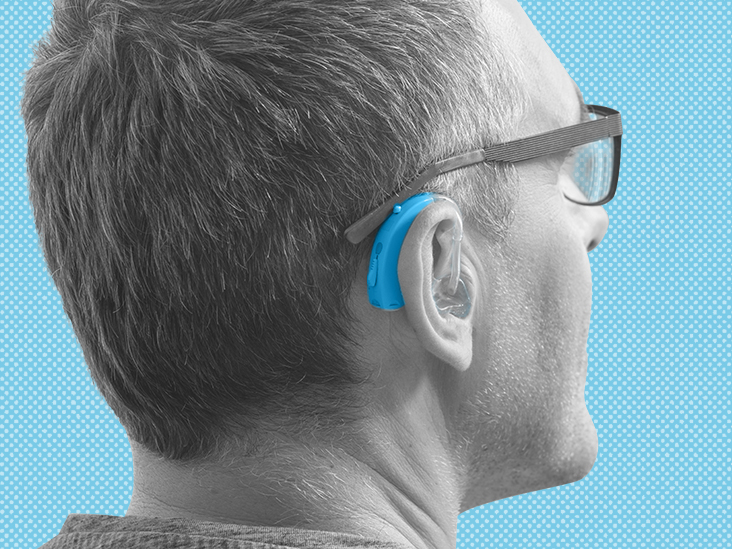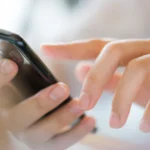
New Technology For Hearing Aids
Despite the fact that hearing aids have been around for decades, there is still some new technology on the market. For example, wireless technology enables two hearing aids to work together as one system. This means the sound input from both devices can be shared and processed digitally. This process is known as binaural processing and mimics the way the brain processes sound. It also cuts down on the need for manual adjustments.
Bluetooth technology
Bluetooth technology can enhance the capabilities of hearing aids. It allows users to stream music, television, audiobooks, and phone calls directly to the hearing aid. This can reduce distortion and make the sound easier to hear. In addition, Bluetooth technology can be used for communication and sharing files. This is especially helpful for people who have several Bluetooth-enabled devices.
Bluetooth technology for hearing aids works by connecting the devices using 2.4GHz wireless connections. The hearing aids and smartphones can then exchange data without a wire, making them wireless and convenient for many users. When purchasing a Bluetooth hearing device, make sure to discuss what you need wireless connectivity for and whether it supports Bluetooth.
If you’re considering Bluetooth-enabled hearing aids, it’s important to talk with a hearing specialist first. He or she can help you decide which model will work best for your needs. Ask them to demonstrate the technology and show you a model. You should also ask for a real-time demonstration.
As with other wireless technologies, Bluetooth technology is designed to reduce energy consumption while allowing hearing aids to work wirelessly. Unlike conventional Bluetooth devices, LiNX’s hearing aid runs on 2.4 GHz technology and runs for several days without a battery change. It also eliminates the need for a separate transmitter.
Bluetooth technology has many benefits for hearing aid users, but it’s important to note that it’s not right for everyone. Some people may have difficulty using Bluetooth devices, while others may need to use Bluetooth hearing aids while on the go. Bluetooth technology enables hearing aids to connect wirelessly to devices like televisions, computers, and cell phones.
Directional microphones
Directional microphones for hearing aids have been around for 55 years, but only recently have they become a viable option for many people. This technology improves the signal-to-noise ratio of hearing aids, which is an important consideration for people with hearing loss. A directional microphone improves this ratio by allowing the aid to focus on sounds that are most important to the user.
There are two basic types of directional microphones. First, there are those that automatically turn on the microphone when required. Another type is the one that is manually activated. In automatic adaptive directionality systems, the microphone turns on and off depending on the situation, changing its polar pattern to better match noise in the listener’s environment.
Directional microphones improve speech understanding in noise. The technology was first used 60 years ago for public address systems to eliminate acoustic feedback. It is now available in hearing aids in the United States. Researchers have found that directional microphones can significantly improve speech understanding in loud environments.
Another benefit of directional microphones is their increased ability to eliminate background noise. In a study, the researchers compared the directional performance of subjects wearing BTE hearing aids in different noise levels. Despite the potential for better speech understanding, they found that these aids did not improve users’ satisfaction.
In a recent study, researchers examined the effect of directional microphones on speech intelligibility in 15 subjects with symmetrical sloping hearing loss. They used the Profile of Hearing Aid Benefit (PHAB) to measure the difference between directional and omnidirectional modes, and reported significantly higher PHAB scores for users with directional microphones.
Rechargeable batteries
Rechargeable batteries for hearing aids allow the wearer to replace a battery and get back to hearing as quickly as possible. This convenience is not without its own set of problems, however. First, batteries can be prone to breakage and overheating, so it is important to keep a battery charger on hand at all times.
Battery life is important for hearing aids, and batteries need to be stored in a cool and dry place. The ideal temperature for hearing aid batteries is room temperature, so that they maintain their maximum energy potential. Also, the protective film covering the battery should not be damaged in any way, or the batteries will discharge prematurely.
Rechargeable batteries are becoming increasingly common among hearing aids, thanks to advances in technology. The technology allows hearing aid providers to offer their customers a wide range of options. Choosing the right rechargeable batteries requires careful evaluation of the wearer’s lifestyle and hearing needs. Moreover, the information provided by providers about the products is crucial for building trust among their customers.
Rechargeable batteries are more environmentally friendly than disposable ones. They are also more economical. An average hearing aid wearer will use about 300 disposable batteries over the course of three years. To ensure that these batteries do not go to waste, it is advisable to dispose them in a proper recycling bin.
Rechargeable batteries for hearing aids can save the wearer time and money. They can last for up to 24 hours on one charge and can be recharged overnight. Some devices have a Mini Turbo Charger that recharges batteries in under three hours.
iPhone compatibility
There are a variety of different phones available for hearing-impaired people. Many of them feature specialized features, such as hearing aid compatibility. Depending on which type of hearing aid you need, an iPhone may be the best option for you. If you are interested in purchasing an iPhone, you should first check the M rating to see if it is compatible with your hearing aids. M ratings range from one to four, with four being the most compatible. In general, the higher the M rating, the less noise and feedback you will experience.
There are a number of manufacturers of hearing aids that offer compatibility with iPhones. For example, the Phonak Virto Black incorporates Marvel technology, which is Bluetooth 4.2 certified. It should work with most Bluetooth phones, including those with Bluetooth 2.1 or older versions. In general, any Bluetooth hearing aid should be compatible with an iPhone, but the requirements and features vary widely.
iPhone users who are looking for hearing aid compatibility will want to know whether their iPhone has the necessary Bluetooth hardware. Apple has a dedicated iOS app that shows which devices are compatible with hearing aids. After finding a compatible device, it’s time to pair your hearing aids with your iPhone. To pair your hearing aid with your iPhone, simply launch the Settings application from the home screen and select Hearing Devices. Then, tap the name of your hearing aid under the MFi Hearing Devices category. It may take a minute or so for the pairing process to be completed.
Apple’s iPhones and iPads are known for their high-quality designs and technological sophistication. Using an iPhone with hearing aids can help you access audio content, reduce the need for earbuds, and improve your hearing.
Remote fine-tuning
Remote fine-tuning for hearing aid systems can be accomplished with the aid of technology. In some cases, this process can be done remotely, without the client traveling to the office. A hearing healthcare professional can adjust the hearing aid to a particular frequency for better hearing performance. These adjustments are typically based on feedback from the user.
This technology allows clinicians to remotely assess the microphone and receiver to ensure proper hearing aid function. This feature is also useful for follow-up care. It helps clinicians provide high-end services and solve issues that may arise during the fine-tuning period. In addition, remote fine-tuning is useful for people with busy schedules, working professionals, and individuals with medical needs.
Patients who wear hearing aids may have a desire to fine-tune their devices on a regular basis. However, this desire will fade over time as they get used to the sound quality. It is important to be aware of any issues that may arise and to make a plan for future follow-ups.
Phonak has partnered with Microsoft to bring this new remote fine-tuning service to patients. It allows hearing care professionals to remotely adjust the Phonak Audeo Marvel Bluetooth hearing aids through the use of a new app. The app also allows patients to communicate with hearing care professionals and receive real-time adjustments. This service is compatible with the Audeo Marvel and Bolero Marvel hearing aids.
Remote fine-tuning for hearing aid systems has many benefits, including the ability to customize sound settings, update hearing aids, and more. Moreover, this service is faster than in-person fitting, allowing audiologist to spend more time with the patient. Furthermore, it also allows a hearing health professional to offer more user counselling to their patients.










